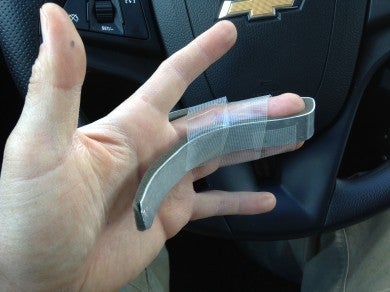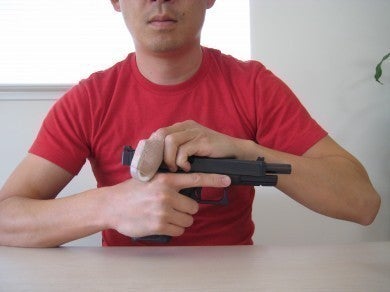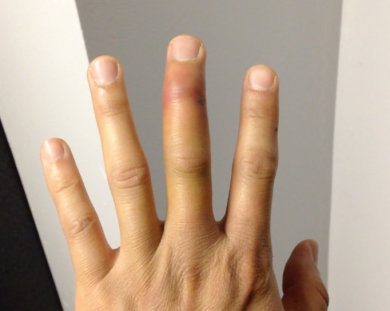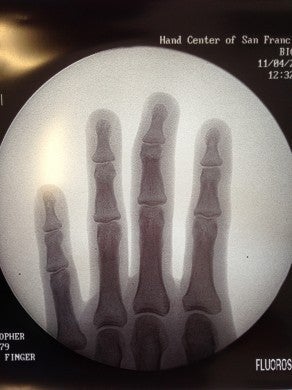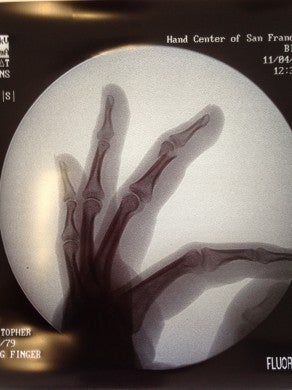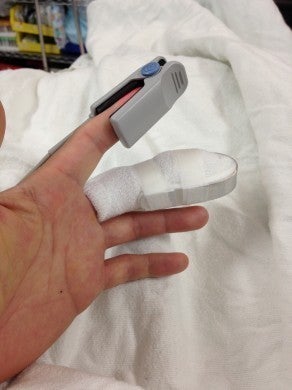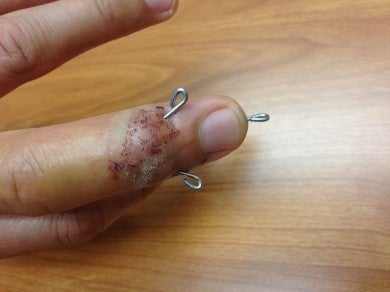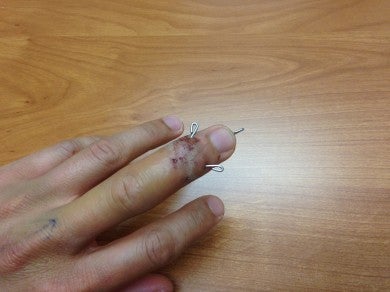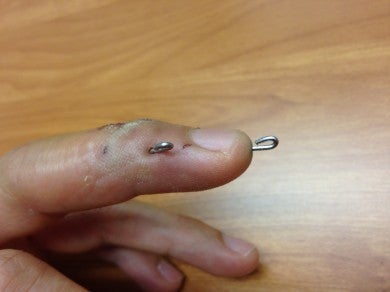I’m telling this story with the hope of showing the value of learning and training how to use your firearms in multiple ways. A typical reason is what if your shooting hand/arm gets injured and you have to shoot with your support hand? What happened to me here is along those lines.
In October, I was shooting the Blue Ridge 3-gun match at the Rockcastle Shooting Center in Kentucky. It is a shooter’s paradise with multiple bays and ranges for pistol, rifle, and shotgun. Sporting clays, archery, a full 18 hole golf course, and a resort are all on the property. Many families come to enjoy their amenities.
I was halfway through the nine stage match and we were shooting in a tobacco barn. I had never seen a tobacco barn before and there were tobacco leaves strung and hung to dry. At the buzzer, I started with my pistol and transitioned to shotgun as I entered the barn. I dumped my shotgun and picked up my AR-15 and started the climb to a second level using two wooden ladders which led to a makeshift shooting platform of plywood in the middle of some support beams. As I got situated in my spot, I loaded my mag, closed the bolt, aimed, pulled the trigger, BAM! And then, a double feed.
I have practiced clearing AR-15 double feeds enough that I went into auto-pilot mode: lock the bolt back, drop the mag, and try clearing the chamber with your hand. There was a round jammed in the chamber and so the last resort here is to start smashing the butt into something solid as hard as you can and let gravity do its thing. Normally, I smash my rifle on the ground but in this small, low light space, I also had a large wood beam at my chest level. I figured I could save some time bashing the beam versus taking a knee to smash on the ground. It would prove to be a terrible choice.
Since the beam was at my chest level, I didn’t have much leverage as I raised the rifle above my head for it to only come down around my chin level. However, I could still produce a good amount of downward force. On one of the smashes, I missed the beam, and instead smashed my left hand middle finger between the forearm and the beam. I kept going though and got the rifle loaded and finished off the stage.
Once the adrenaline subsided, I could start to feel my heartbeat through my finger. A fair amount of pain accompanied each thump and throb. I had a military friend of mine take a look at it and after performing some standard tests, determined it was a bad sprain and so we splinted it.
With four more stages to go, I was determined to finish the match. It hurt, sure, but not bad enough to stop shooting. Before my next stage, I was dry firing my pistol, rifle, and shotgun to get a sense of what I could and couldn’t do well with an injured finger. I could not do two things 1) Rack my pistol the way I normally do and 2) Speed reload my shotgun with my weak hand.
So here is the value of knowing and practicing some other ways of doing things. For my pistol, I normally charge my pistol as such:
During the match I took the splint off, but I had inadequate strength in my middle finger to grip the slide, and it hurt a ton. I adjusted and charged my pistol like so:
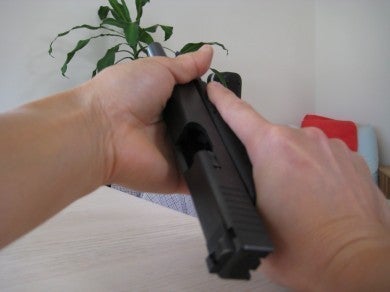
Charging a semi-auto pistol by grasping the slide near the muzzle, and “pinching” the slide in between your thumb and pointer finger.
This may sound simple, but in the middle of a competition when you’re on the clock, there’s a decent chance your brain will short circuit so it’s helpful to have the muscle memory built in.
For my shotgun, I luckily had a shotgun shell caddy that could allow me to switch to a strong hand reloading technique.
I finished out the match while munching on Advil throughout. I didn’t shoot as well as I wanted to since I was basically slowed down by magazine reloads, and the general pain of using an injured finger.
When I got home, I decided to give my finger 1-2 weeks to heal, let the swelling go down and see how much it would heal on its own. Here’s what my finger looked like after two weeks:
My doctor friend took a look, I could move my finger although with some pain and limited range of motion. There were no signs of crepitus which indicated that my finger was unlikely to be broken. However, my friend was concerned about the deviation so he recommended I get it x-rayed.
The doctor then asked me to rotate my left hand 90 degrees so we could see my finger from a side view:
Well, well, well. I have broken finger. The doctor slotted me in for surgery the next day to realigned the bone, and throw some pins in. I went under anesthesia for about 30 mins, and awoke to my finger all wrapped up:
One week later, we took the bandages off to check and make sure the pins weren’t infected or anything. I will give you your one warning to stop reading if you have a weak stomach. But who are we kidding, now that I’ve said that, you’re DEFINITELY going to look:
These pictures were taken before the doctor cleaned my finger, so it looks a bit worse than it really is.
So in conclusion, make sure you practice shooting and manipulating your firearms in various ways in the event you are injured or disabled. And don’t smash your finger with your rifle.
12/5/13 UPDATE: Video of the pins coming out
 Your Privacy Choices
Your Privacy Choices


